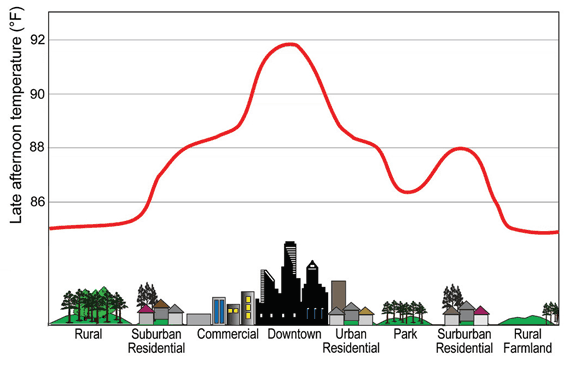The content of this website is no longer being updated. For information on current assessment activities, please visit http://www.globalchange.gov/what-we-do/assessment
Urban Heat Island Effect

Large amounts of concrete and asphalt in cities absorb and hold heat. Tall buildings prevent heat from dissipating and reduce air flow. At the same time, there is generally little vegetation to provide shade and evaporative cooling. As a result, parts of cities can be up to 10ºF warmer than the surrounding rural areas, compounding the temperature increases that people experience as a result of human-induced warming.1 Image Reference: Lemmen and Warren2
References
- 1. [313] Wilbanks, T. J., P. Kirshen, D. Quattrochi, P. Romero-Lankao, C. Rosenzweig, M. Ruth, W. D. Solecki, J. Tarr, P. H. Larsen, and B. Stone. "Effects of Global Change on Human Settlements." In Analyses of the Effects of Global Change on Human health and Welfare and Human Systems, edited by J. L. Gamble, 89-109. Vol. Synthesis and Assessment Product 4.6. Washington, D.C.: U.S. Environmental Protection Agency, 2008.
- 2. [286] Climate Change Impacts and Adaptation: A Canadian Perspective, Edited by D. S. Lemmen and F. J. Warren. Ottawa, ON: Climate Change Impacts and Adaptation Program, Natural Resources Canada, 2004.
Summary
| High-resolution | High-resolution JPEG |
|---|---|
| Photo Credit | ©Crown Copyright and Licensing, Canada |